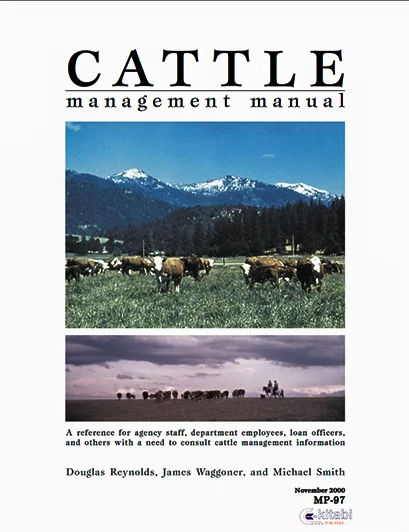Raising cattle for profit requires a detailed management plan that sets production goals and schedules for days, weeks, and years ahead. These guide lines for health, nutrition, and reproductive management help beef producers make important decisions.
Many of the factors that affect reproductive performance can be controlled to some degree. A well-planned and executed reproductive management program will improve reproductive performance and productivity.
About the Book
Information about cattle instincts and related behaviors is a valuable tool to help producers understand why cattle behave and react the way they do. Cattle have been domesticated for a very long time and are influenced by herd instincts, especially when they perceive a dangerous situation. Cattle rely heavily on their vision and have an almost 360-degree panoramic field of view.
This wide field of vision allows cattle to see predators without having to turn their heads. However, cows have limited effective depth perception other than forward vision, which can make them uncomfortable when driving cattle or working in facilities where cattle are handled. Cattle are sensitive to light and dark contrasts, such as shadows.
Slate fences and vertical bars in work facilities cast shadows that impede cattle movement. Studies have shown that cows are not color blind. However, they say that painting handling facilities bright yellow will reduce injuries because cows can see gates and fences better. No one can explain why cattle that have never seen an actual cattle guard would refuse to cross a painted cattle guardon the road.
Humans rely heavily on sight to interpret their environment, and we like to believe that other animals have that ability as well. Cattle, however, use other senses, including hearing, taste, smell, and a sense of direction. These highly developed senses are referred to as the “cow senses.”

